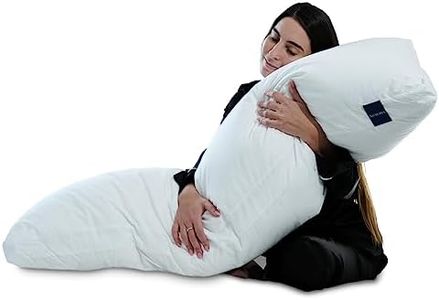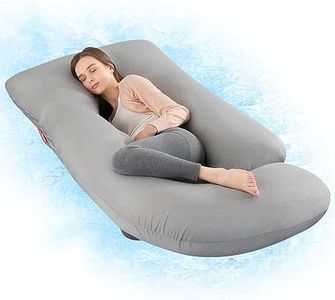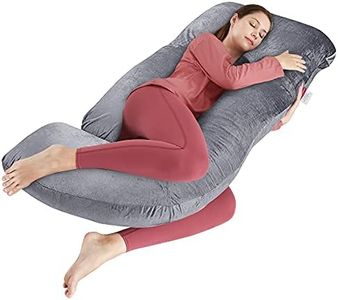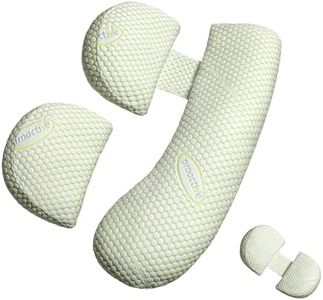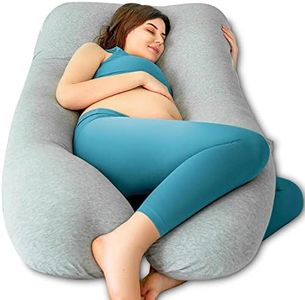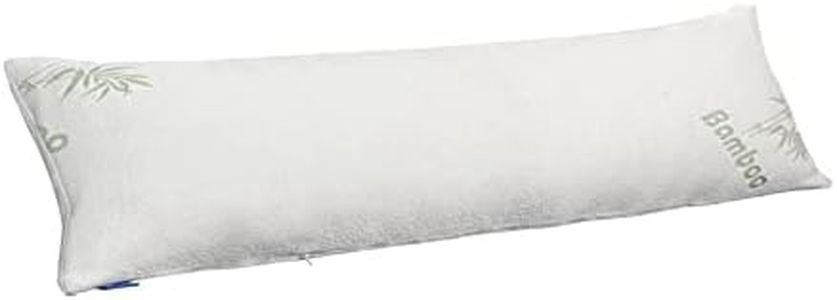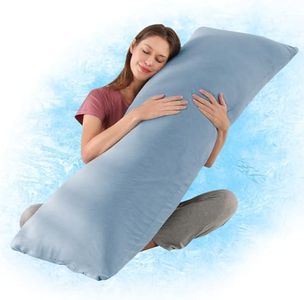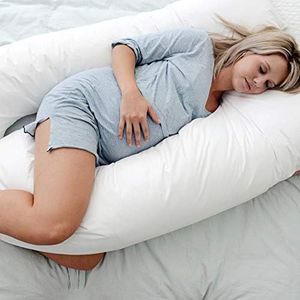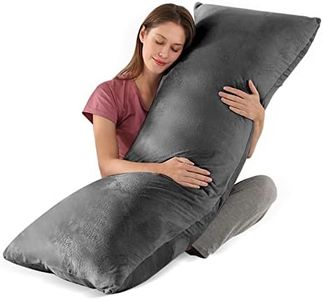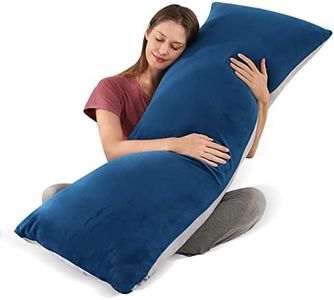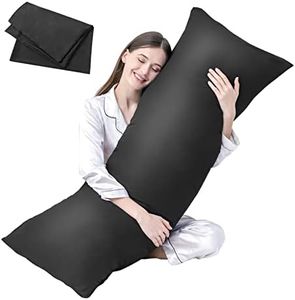We Use CookiesWe use cookies to enhance the security, performance,
functionality and for analytical and promotional activities. By continuing to browse this site you
are agreeing to our privacy policy
10 Best Body Pillows
From leading brands and best sellers available on the web.Buying Guide for the Best Body Pillows
Choosing a body pillow can genuinely improve your comfort during sleep, whether you’re seeking extra support for your back, knees, or need something to hug. The best way to pick the right body pillow is to think about your sleeping habits and what kind of support your body needs to feel relaxed and restful. Consider the shape, size, materials, and other features that match your sleeping style so you can wake up refreshed and ache-free.Size and ShapeBody pillows come in a range of sizes and shapes, such as straight, U-shaped, C-shaped, and even J-shaped. The size affects how much of your body the pillow supports, and the shape is important for targeting support, whether it’s for your back, belly, knees, or all-around comfort. A straight pillow is simple and versatile, great for cuddling or propping up alongside your body. U- and C-shapes provide support on multiple sides, which is helpful for side sleepers, pregnant users, or those with aches in more than one area. Think about whether you're looking for support in specific spots or a cuddleable shape, and choose the one that fits your sleep position and needs.
Fill MaterialThe filling inside a body pillow determines its softness, firmness, and how well it holds shape. Common fills include memory foam, polyester fiber, microbeads, and natural materials. Memory foam molds to your body for strong support but can feel a bit warm. Polyester is fluffier, budget-friendly, and easy to wash, but may flatten over time. Natural fills like cotton or down are breathable and soft, but may need more care. If you prefer a firmer, contouring feel, look for memory foam or dense microfiber. If you like something soft and cushy, polyester or down works better. Your comfort preference and potential allergies should guide your choice here.
FirmnessFirmness means how hard or soft the pillow feels when you rest against it. Some body pillows are very soft and squishy, while others are firmer for extra support. A firm pillow offers better alignment for your body, which is important if you have aches, pains, or need to keep your spine straight. A softer pillow can feel more comfortable if you just want something to hug or snuggle. Think about if you want your pillow to support your body weight or just be a comfy companion—those looking for pain relief or who are pregnant tend to prefer firmer options, while others may enjoy a cozy, softer one.
Cover Material and MaintenanceThe outer cover affects the feel against your skin and how easy it is to clean. Cotton covers are soft, breathable, and good for sensitive skin. Some covers are made of bamboo or microfiber, which can wick away moisture and feel smooth or cool. Removable, machine-washable covers are easier to keep clean—something important if you have allergies or plan to use the pillow regularly. If you value easy care, pick a pillow with a removable and washable cover, and if you have preferences for texture or want a cover friendly to sensitive skin, pay attention to the fabric type.
Breathability and Temperature RegulationBreathability refers to how well the pillow lets air flow through, impacting whether it stays cool or traps heat during the night. Some pillows are designed with cooling gels or breathable fabrics, while others, especially those with dense fillings, might feel warmer. If you sleep hot or live in a warm climate, breathable materials like cotton or bamboo, or covers with mesh panels, help keep you comfortable. If you get cold at night, warmth-retaining pillows might be more suitable. Match breathability with your body temperature and the climate in your bedroom.
